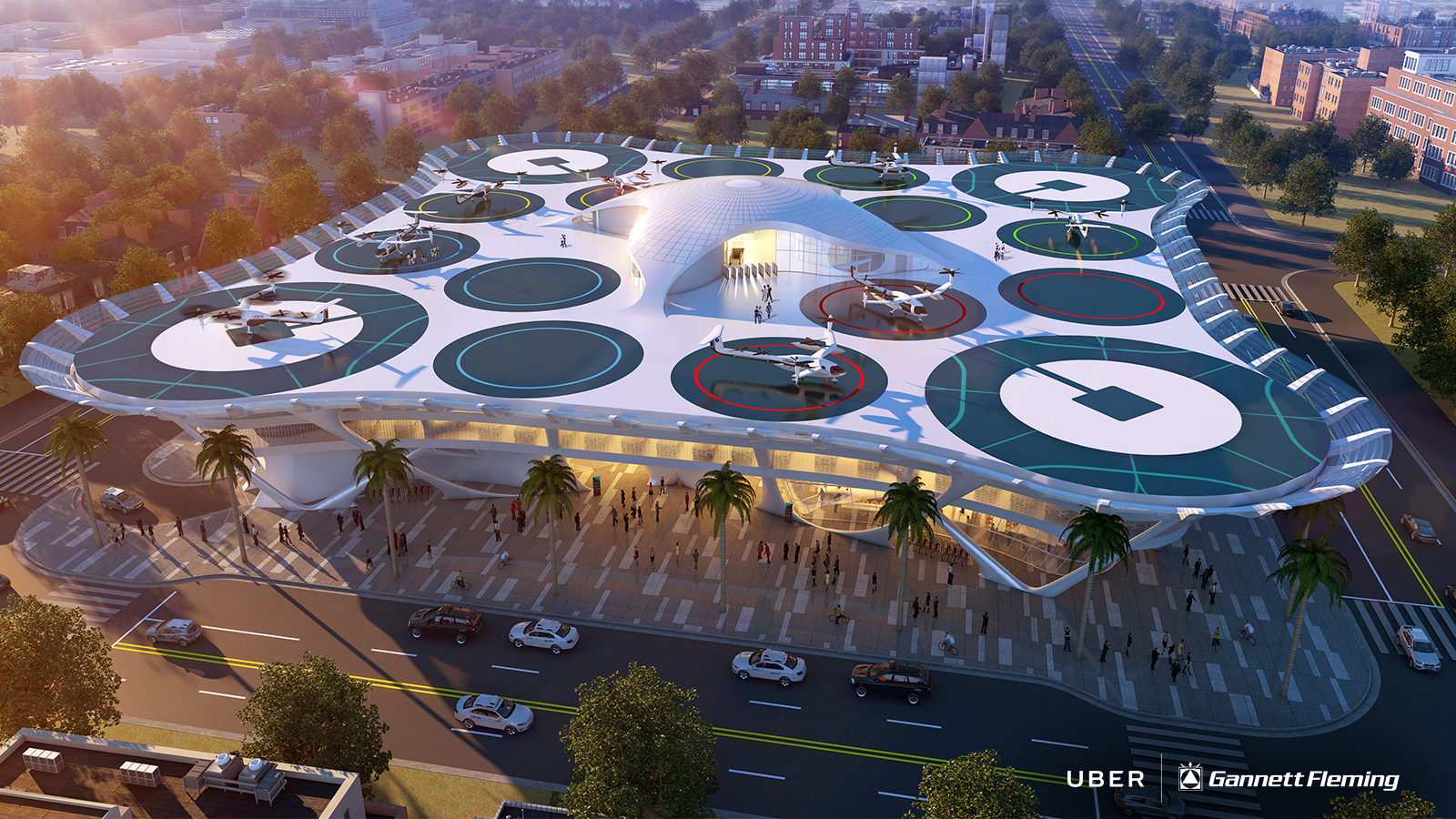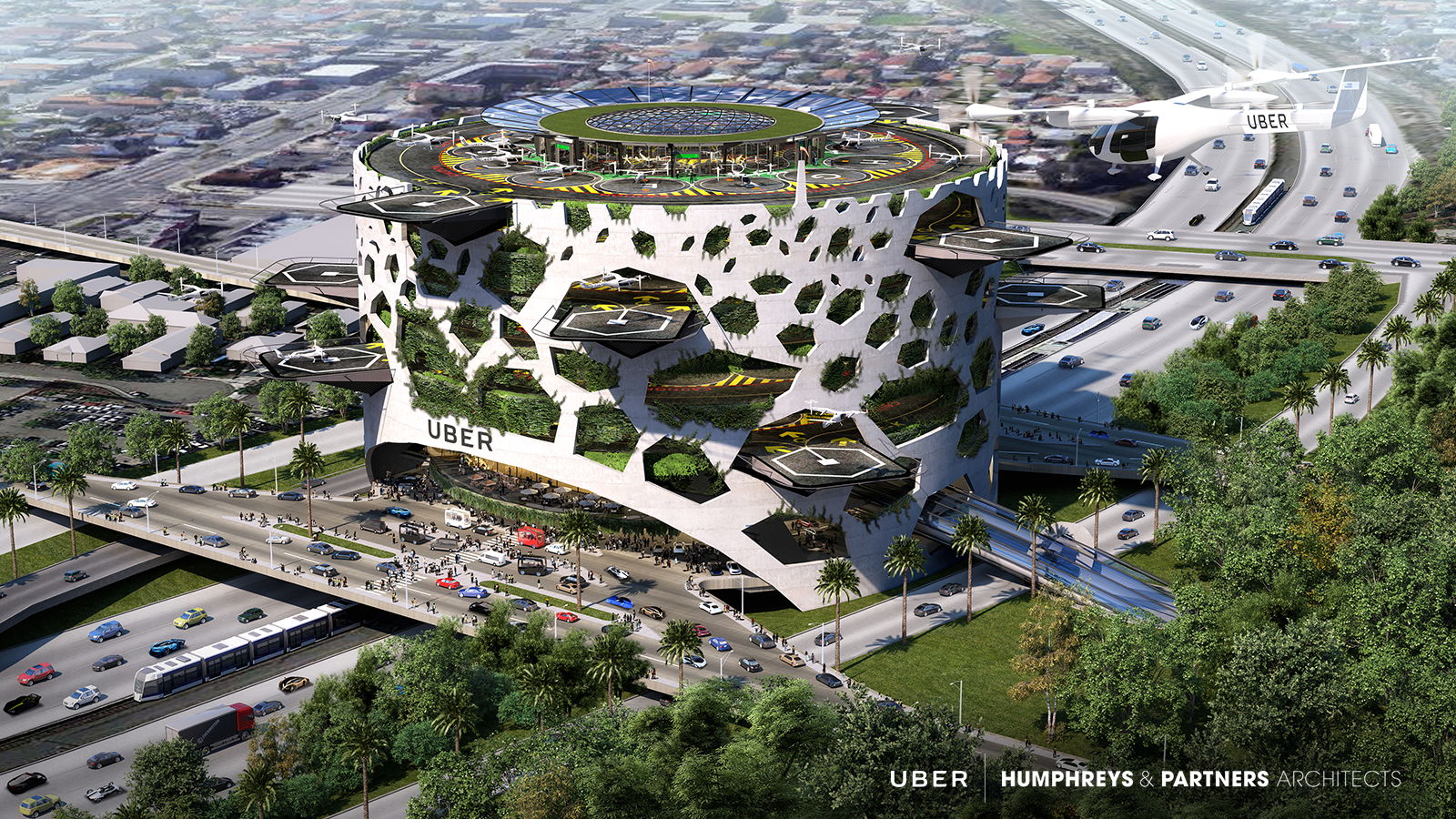Uber collaborates with NASA on the project to create a manned taxi

Recently it became known that the company Uber Technologies Inc. has already entered into a second partnership agreement with the National Aeronautics and Space Administration of the United States (the first concerned UAVs, also airborne). According to the partners, urban air traffic is a revolution in the movement of people and goods in populated areas. It allows you to change the way people live in the same way that smartphones did.
The project was named UberAIR . According to the developers of the flying taxi, the company plans to demonstrate its technology to the public in 2020, and the partners will start commercial exploitation of a new type of vehicle by 2024. In order to allow flying taxis to land in the city, Skyports will be created - something like helipads. Flying taxis are related to helicopters because both vehicles are able to take off and land vertically.
True, if the helipads are designed for single passengers, the air ports for flying taxis will be something of a public stop. According to the project, at one o'clock they must cope with a passenger traffic of 4000 people. The main condition that the developers of flying taxis and air ports have received is that new-type vehicles must be able to charge between separate flights.
')
Actually, in the creation of such structures there is nothing difficult, in the case of the availability of free space for construction, they can be built fairly quickly. The problem may be the cost of building an air port and the expediency (primarily financial) of creating such a transport for large cities.
What you can see in the illustrations is just an artist’s fantasy; real ports may look different. However, in the designers' view, these can be modular systems, which can easily be built anywhere. The basic component, in fact, the launch pad and the landing lot, can be added to already existing buildings. Each air port should be able to take about 1000 landings of air taxis per hour.
The platform can also serve as the roof of a shopping center, whose customers after shopping decide to go home. Similarly, new buyers will be able to fly in order to stock up on merchandise. How many seats can be on one site? While this issue is being discussed.

As for the role of NASA in all this, the agency plans to take part in the development of software for managing the routes of a flying taxi. Uber previously reported that for NASA this is the first contract that is associated with projects that can be called "ground". Usually the agency supports aerospace companies that work with space.
Jeber Holden, Uber Product Director, has previously reported that testing electric flying taxis is scheduled to begin in Los Angeles in 2020. The car is designed for four passengers and is able to pick up speed up to 322 km / h. The company looks forward to the possibility of cooperation with partners from the aviation industry in different regions, including the United States and Europe. Some ex-NASA employees work at Uber, including, for example, Mark Moore and Tom Prevost.
The very initiative of Uber can hardly be called unique. Other companies are also developing air taxi. For example, a German startup Lilium last year was able to attract several tens of millions of US dollars and began developing its own vehicle. There are similar projects in Dubai. Here, perhaps, such transport will start working first, and then the turn of other regions will come.

Another example of an electric transporter is eVTOL
Cheap flights to aerotaxi will not be, at least, at first. The ticket for the first routes "San Francisco - San Jose" is estimated by Uber at $ 130. But if flying taxis become quite common, the price will drop down to $ 20. Electric aircraft can also be used by regional airlines, for which this will be a profitable development direction. Flight over short distances can take place in a fully automatic mode, without the participation of pilots.
Source: https://habr.com/ru/post/371501/
All Articles